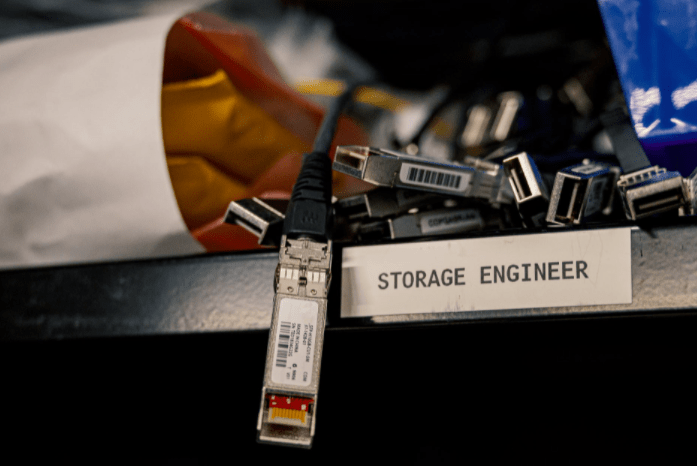Database denormalization is the process of adding redundant data to a table to improve performance. Denormalizing your database can improve performance and reduce the number of queries that are required to access the data that you need. There are several ways to denormalize a database, and each has its own benefits and drawbacks. This article will discuss the different methods of denormalization, and look at some real-world examples of how denormalization can be used to improve performance.
Benefits of Database Denormalization
Denormalization can improve the performance of a database by reducing the number of queries that are required to access the information you need. It is often more efficient for an application to combine data from separate tables together in a single table, instead of joining multiple tables on the fly as part of a query. Also, denormalization in database design is often the easiest way to improve performance in a database with existing schema constructs. This means that if you are updating data or adding information to a table, rather than creating an entirely new table, it will be faster if you update existing rows.
This can be done by adding related data to a table, or by creating a view that combines related data from multiple tables. You may need to denormalize your database to support new types of queries.
It can also have some drawbacks, however, which is why it should only be used in certain circumstances. Denormalized data may not always be easily updatable, and can actually reduce the effectiveness of indexes on the table by increasing the size of the table.
Different Methods of Database Denormalization
Several methods can be used to denormalize a database: nesting, additional columns, and views.
Nesting
Nesting is the process of adding related data to a table to reduce how many tables need to be queried for information. For example, an Orders table may include not only the information about the customer but also their address.
Additional Columns
Additional columns are added to a table to reduce the number of tables that need to be queried when updating or selecting information from a database. For example, an Orders table may include not only the information about the customer but also their phone number and fax number.
Views
A view is a virtual table that represents data from several other tables in the database, allowing you to add additional information without denormalizing an entire table. For example, if sales representatives frequently need customer information from the Customers table and order information from the Orders table, a view could be created which combines these two tables and adds additional columns for the sales representative’s local date and time.
Denormalization can improve performance significantly, as long as it is done appropriately. When denormalizing your database, you should be careful not to create unnecessary or redundant data that will reduce the effectiveness of indexes or cause update issues down the road. As with any database design strategy, you should test denormalization before implementing it on a live database.
Tables and Efficiency
Tables should be as simple as possible. The more that a table has to be joined or otherwise manipulated in a SELECT statement, the slower the application will become. Joins require a full table scan of both tables from which they are joining data, and every additional column added to the where clause of a select statement also slows down performance because SQL has to evaluate each column individually.
The easiest way to improve the performance of data retrieval in a database is to add redundant data, and this is where denormalization comes into play. A view can be created that combines related columns from one or more tables, which can then be used in place of separate SELECT statements on different tables. All the same, information can be retrieved by executing a single query, which is far more efficient.
It is possible to denormalize your database to reduce the number of queries that are required, or simply to improve performance on existing data. When you have done so, however, it will become more challenging for you to update your data because adding additional information to a denormalized table or view can be difficult.
Rewriting Queries
It may be necessary to rewrite your database queries to optimize performance, but it is often easier to improve performance by denormalizing existing tables rather than writing entirely new ones. This means that you will have fewer tables in your database, and can even combine data from multiple tables into a single table using views.
You will need to consider the benefits of denormalizing a database against the drawbacks, which include making it more difficult for you to update information in the table. For example, if you are adding new columns with redundant information that can be combined with existing columns in the table, it will be more challenging to update this information when you need to.
Not Always Necessary
Denormalization is not always necessary for performance improvements, however. Views are typically created when it is easier to write a single query than multiple queries on different tables, which can still improve database performance even though there is some additional overhead involved with executing a single view rather than multiple queries. In some cases, it may be possible to improve performance by simply rewriting your SELECT statements to reduce the number of columns required.

Also, while denormalizing the data in your database may be faster than joining multiple tables, this will not always be true. Joining tables is more efficient when there are indexes on each of the relevant columns; without indexes, joins can take longer because SQL has to search for matching values in both tables. A view might actually improve performance here if it sorts the data to match the index put on each column.
Denormalizing a database can be a great way to improve performance, but it is important to do so carefully. When denormalizing a database, you should be careful not to create unnecessary or redundant data that will reduce the effectiveness of indexes or cause update issues down the road. As with any database design strategy, you should test denormalization before implementing it on a live database.















